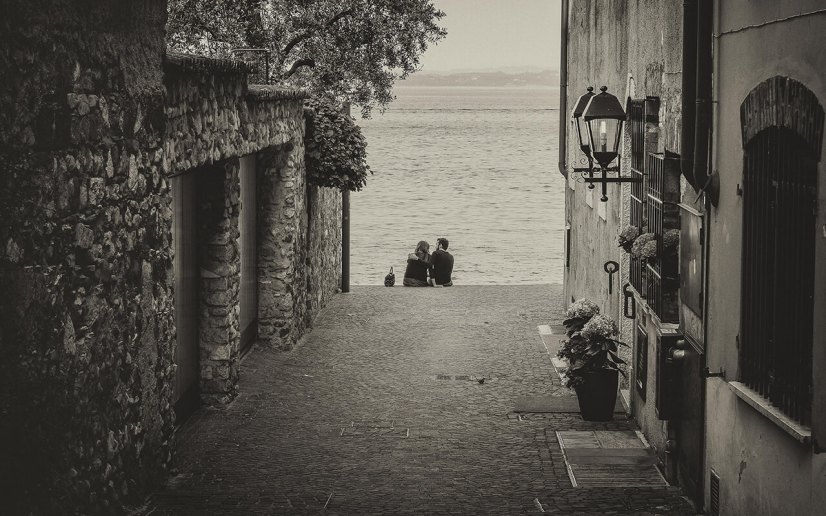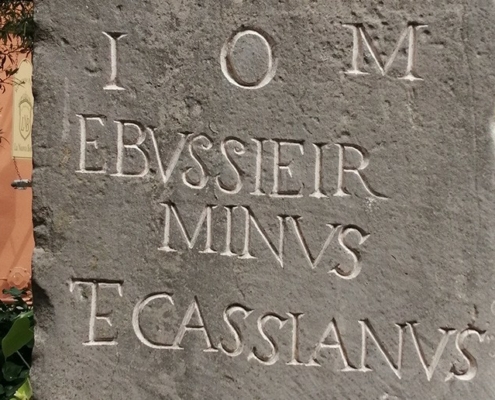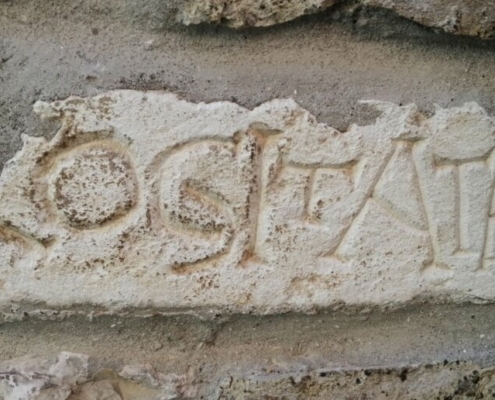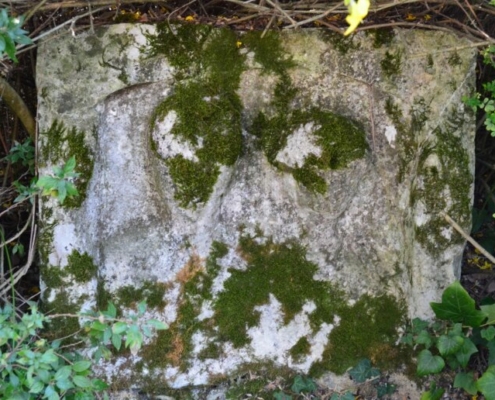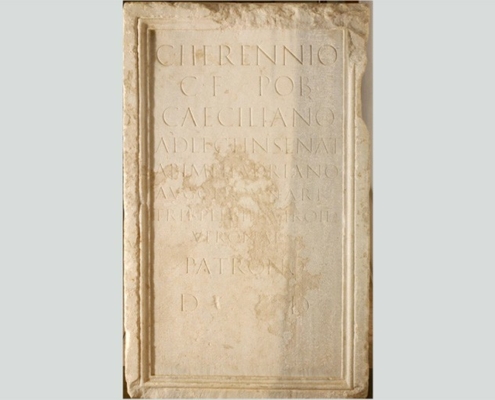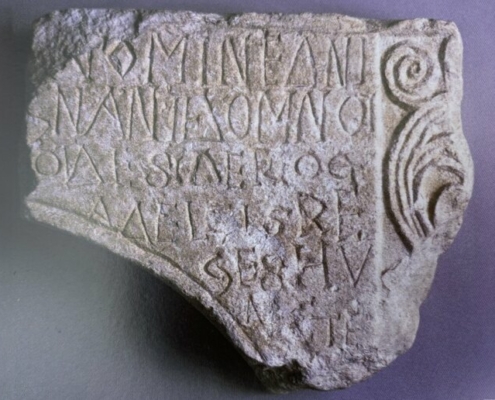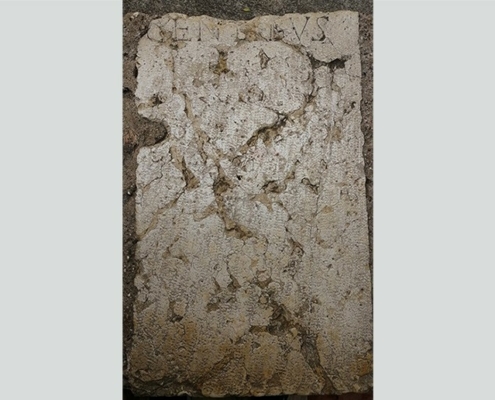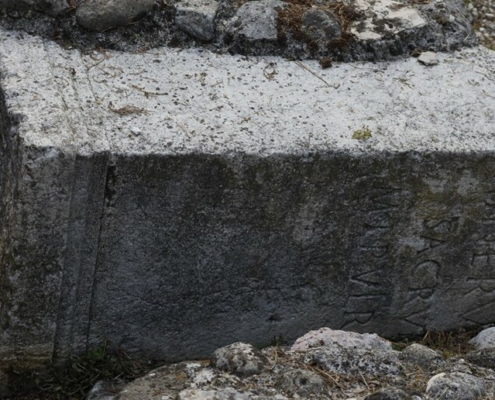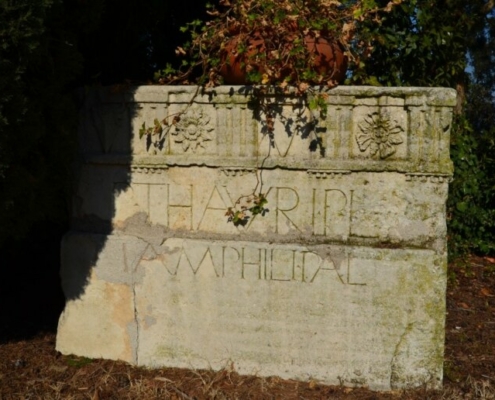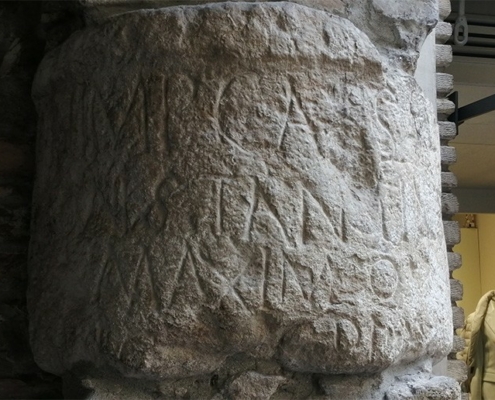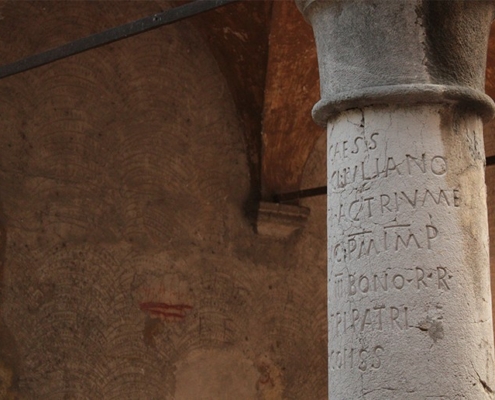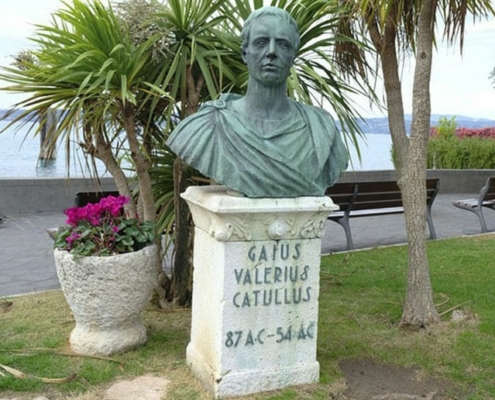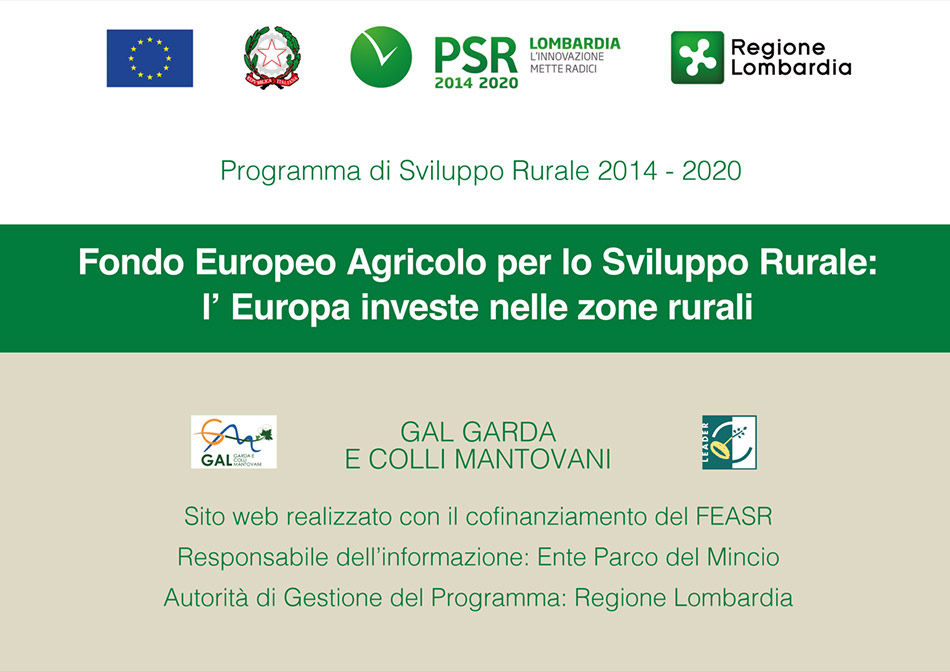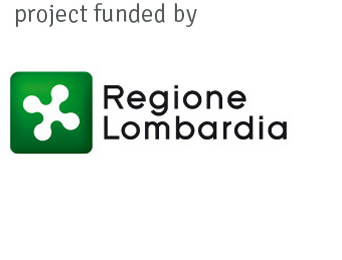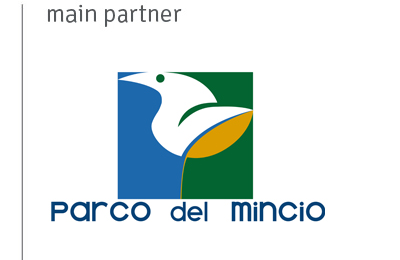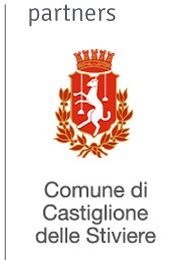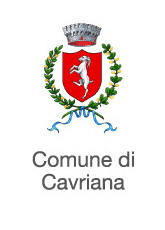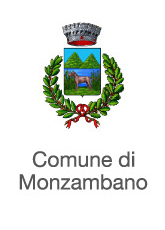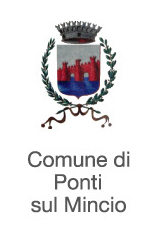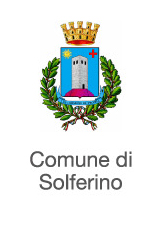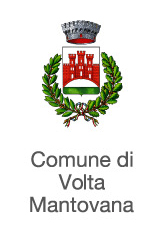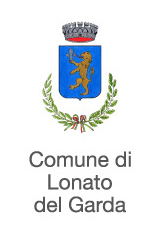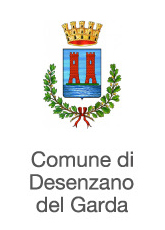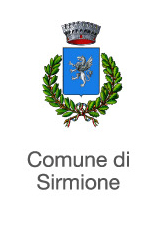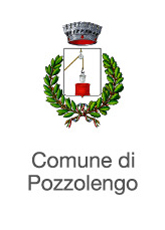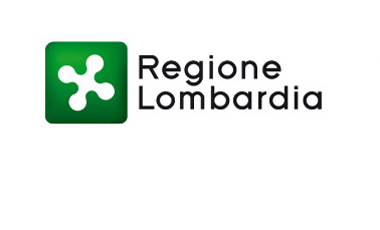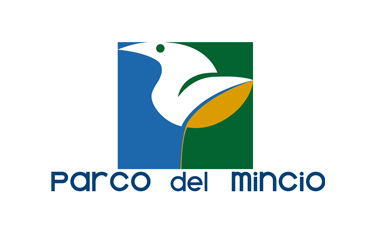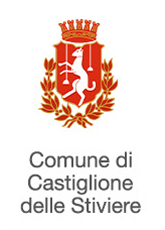![]() – Sirmione
– Sirmione
The path of the epigraphs
Among its antiquities, Sirmione offers epigraphic evidence which, thousands of years later, opens a suggestive window on facts, people and societies of the past. The Path of the Epigraphs is an exciting walk through the most secret streets of the Peninsula to discover these “talking stones” that take us on an exciting journey through time.
We thank Professor Sabina Fadabini and Doctor Simone Don for their timely guidance and precious help.
The stages of the journey:
- Monumento a Catullo, Piazza Carducci
- Cogitate, Via Santa Maria Maggiore n 8
- Miliario di Giuliano, Chiesa di Santa Maria Maggiore, via Santa Maria Maggiore n 17
- Gentibvs, Chiesa di Santa Maria Maggiore, via Santa Maria Maggiore n 17
- Ara a Giove, Canonica della Chiesa di Santa Maria Maggiore, via Santa Maria Maggiore n 17
- Miliario di Costantino, Via Vittorio Emanuele n 38
- Stele a Minerva, Chiesa di San Salvatore, via San Salvatore
- Ritratto di coniugi, Parco di Villa Cortine Palace Hotel, viale Gennari n 2
- Iscrizione funeraria, Parco di Villa Cortine Palace Hotel, viale Gennari n 2
- Frammento di Ciborio, Museo archeologico di Sirmione, piazzale Orti Manara n 4
- Base con dedica a Caio Erennio Ceciliano, Museo archeologico di Sirmione, Grotte di Catullo, piazzale Orti Manara n 4
Monumento a Catullo
Piazza Carducci
Before delving into the discovery of the ancient epigraphs, a greeting is obligatory to the one who is, and who defined himself, the master of the house (herus, poem 31), on whom unfortunately no epigraphic document remains. However, posterity thought about it: in 1935 the Municipality of Sirmione commissioned a rather martial bust dedicated to Gaius Valerius Catullus (86 – 54 BC) from the Clodoveo Barzaghi foundry of Milan, currently located in Piazza Carducci, in front of the pier, almost to welcome those arriving in Sirmione by water.
Curiously then the herm was not placed here, but in a more hidden place, since in those years full of fervent patriotism preparatory to the African venture, the inclination of the poetry of Catullus was not appreciated, a poet not inclined towards war and instead a lover of more intimate feelings.
Text: Gaius Valerius Catullus 86 – 54 A.C.
This modern epigraph tells us little: that he belonged to the important Veronese family of the Valeri and that he died at a young age. But his poems still speak for him.
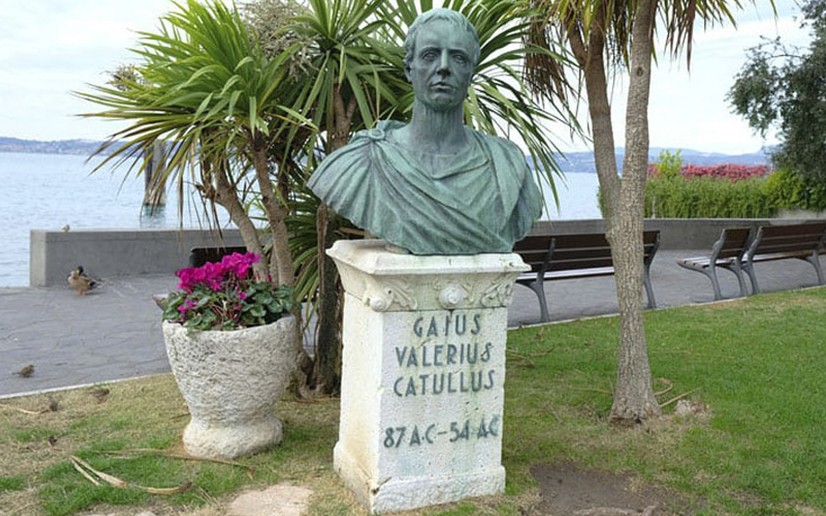
Cogitate
Via Santa Maria Maggiore, 8
Having said goodbye to the landlord, continue along the main street and take via Santa Maria Maggiore. At number 8, set in the wall, a fragment of the Longobard age (568-774) belonging to a ciborium, admonishes us: COGITATE, that is “reflect”. The expression, taken from a biblical verse, abstracted from its context, can be read as a discreet invitation to meditate, even in the din of the holiday crowd, on the rapid changes in history and on the precariousness of the human condition.
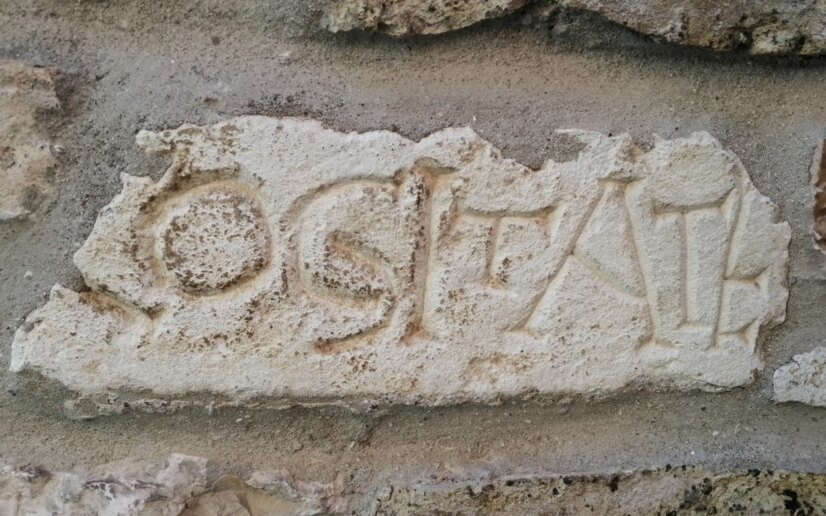
Miliario di Giuliano
Chiesa di Santa Maria Maggiore, via Santa Maria Maggiore, 17
Once you reach the parish church of Santa Maria Maggiore, the last column on the left for those entering the portico bears the following inscription in honor of the emperor Julian. The milestone can be dated from 3 November 361 to 362.
Im̅p(eratori) Caess(ari) (!) / d(omino) n(ostro) Fl(avio) Cl(audio) Iuliano / P(io) F(elici) victori ac triumf(atori) / semp(er) Aug(usto), p̅(ontefici) m̅(aximo), i̅m̅p̅(eratori) / VII, conss(uli) (!) I̅I̅I̅, bono r(ei) p(ublicae) / nato, patri patriie (!), / proconss(uli) (!).
It is a milestone which was located along a communication route and which was reused in the portico in front of the sacred building. Curious fate: this emperor, who tried to make Christians disappear, now supports a church.
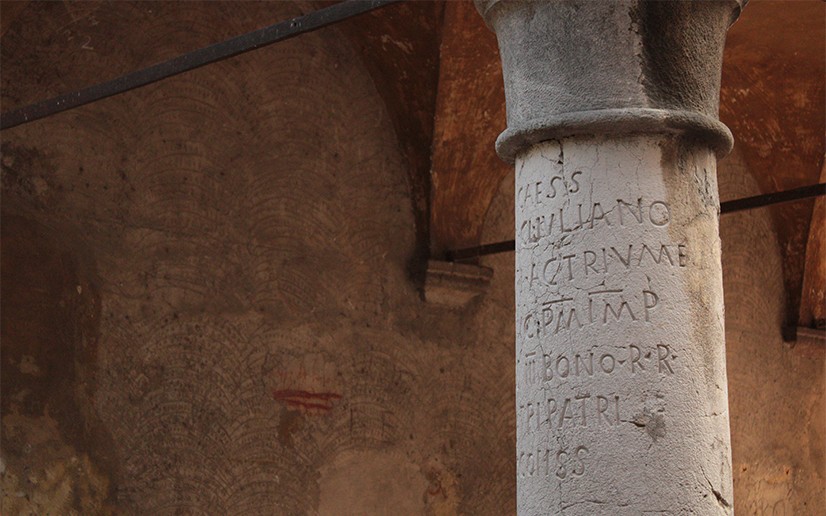
Gentibvs
Chiesa di Santa Maria Maggiore, via Santa Maria Maggiore, 17
Internal fragment of an unidentifiable monument, perhaps a cippus in white Valpolicella limestone, now walled up in the balustrade of the entrance porch of the Church of Santa Maria Maggiore. The space to the right and below would seem to indicate that this is the last line of the inscription. It is hypothesized a reference to a sacred dedication made to divinities. Based on the letters readable today and the hypotheses formulated, the complete word would be composed as follows:
[- – – indul?]GENTIBVS.
In this sense, a dedication to the Matronae indulgentes documented near Novara is interesting. The shape of the letters suggests a chronological placement in the 1st century AD.
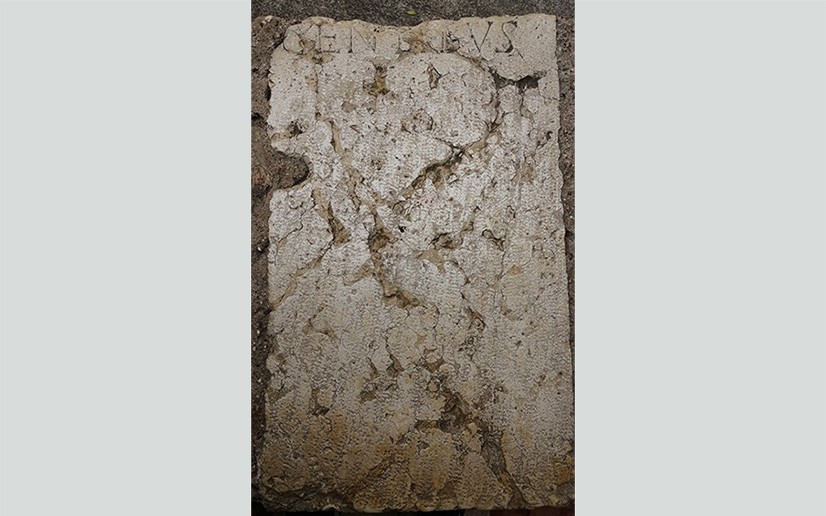
Ara a Giove
Canonica della Chiesa di Santa Maria Maggiore, via Santa Maria Maggiore, 17
Having reached the stairway that descends to via Antiche Mura, here is another example of the reuse of ancient stones. It is a two-faced cippus, so to speak. The side immediately visible to anyone passing by bears the following Latin inscription dating back to the III-IV century AD.
Text:
I(ovi) O(ptimo) M(aximo)
EBUSSI FIRMINUS ET CASSIANUS
It is one of the three areas dedicated to Jupiter – the best and greatest god – whose dedicatees are the two Ebussi brothers, Ebussio Firminus and Ebussio Cassiano. The later inscription instead takes us, as if by magic, to another historical period:
ELEMOSINA / DELLA B.(eata) V.(ergine) DEL SS° (Santissimo) R° (Rosario).
Above the letters is carved the royal crown of the Madonna surrounded by the rosary crown. For centuries, in fact, the plaque supported the alms box placed in front of the altar of the Madonna del Rosario, which is located on the side of the apse, on the right as you enter the church, without the rear inscription being more visible. This altar bears witness to how ancient artefacts were reused in later periods, certainly without any regard for their value as historical testimony, but at the same time allowing their conservation.
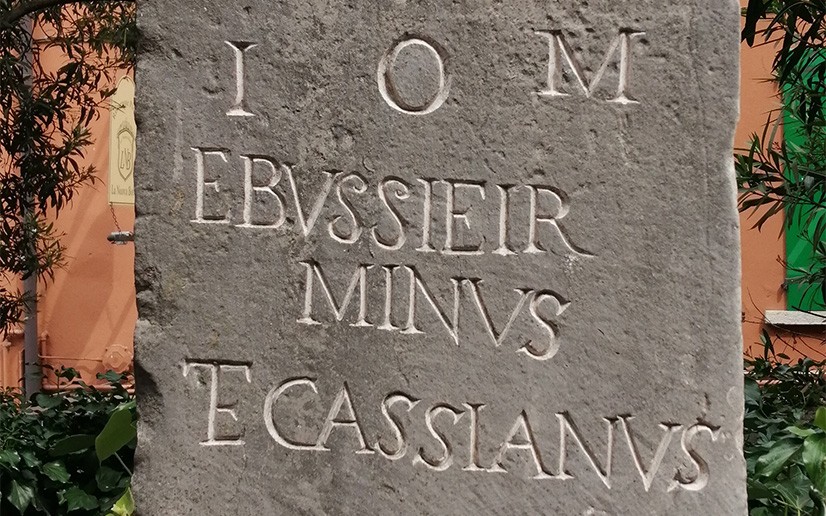
Miliario di Costantino
Via Vittorio Emanuele, 38
Another milestone is set in the corner of the northern portico above which the seat of the Municipality once stood. It is dedicated to the emperor Constantine (306-337), known for the edict of Milan of 313 with which the Christian religion was officially recognized.
Iscrizione: D(omino) n(ostro) Imp(eratori) Caes(ari) / Fl(avio) Constantino / Maximo / P(io) F(elici) Vict[o]ri Aug(usto) / – – – – – –
The milestone can be dated between 327 and 330 AD.
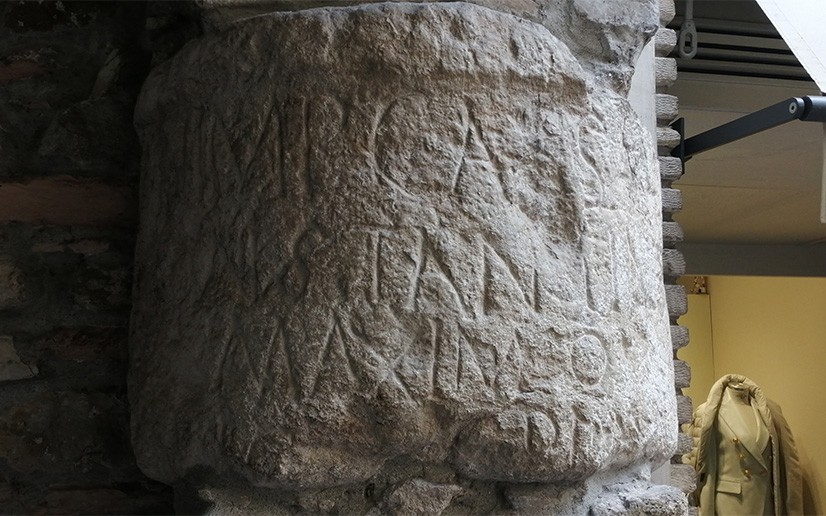
Stele a Minerva
Chiesa di San Salvatore, via San Salvatore
It is a sacred dedication, placed for the goddess Minerva, by three brothers: Marcus Virius, Lucius Virius and Publius Virius. We do not know if the divinity in this case was the Roman Minerva or if under her name the identity of a locally venerated goddess was hidden in our area. In any case, the cult of Minerva enjoyed a certain diffusion on Lake Garda, as can be seen not only from other dedications, but also from the presence of the name of Manerba.
Typology and shape of the letters suggest a chronological collocation in the 1st century AD.
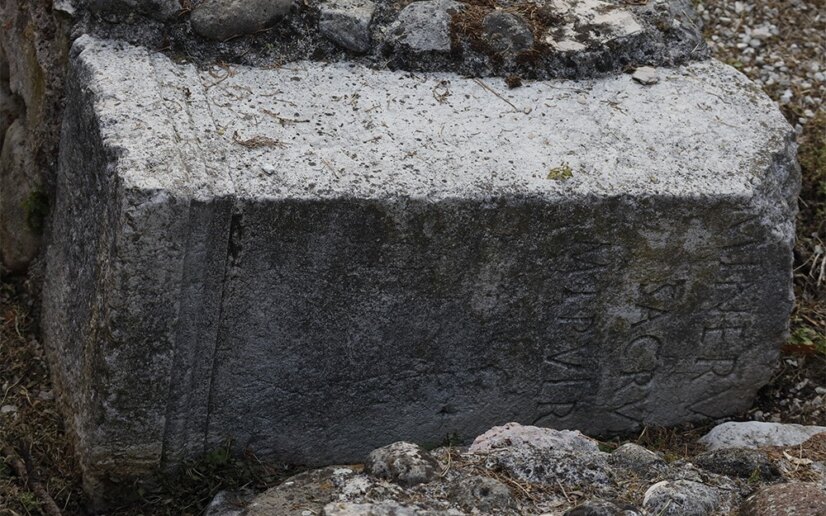
Ritratto di coniugi
Parco di Villa Cortine Palace Hotel, Viale Gennari, 2
Hidden among the vegetation of the park of Villa Cortine is a stele from the 1st century AD. whose epigraph has been lost. In the niche is carved the now almost illegible portrait of a rich provincial couple who, according to the fashion of the time, intended to flaunt their social status with the wealth of the funerary monument. The stele was originally placed elsewhere, but was brought to the park of the villa on the Cortine hill by the new owner during the years of the First World War, together with other pieces which, expertly arranged in the rich vegetation that replaced the pre-existing olive grove, were to create a classic and romantic atmosphere at the same time.
The park is private and access is allowed only to hotel guests.
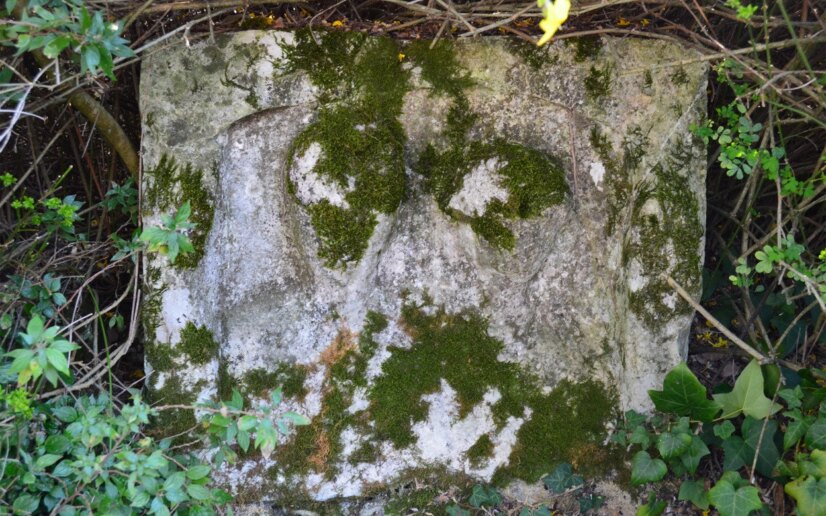
Iscrizione funeraria
Parco di Villa Cortine Palace Hotel, Viale Gennari, 2
It is a funerary monument dating back to the late Republican age (second half of the 1st century BC), crowned by a metopal frieze with bucrania and naturalistic rosettes, bearing the inscription:
P. (publi) Thauri P. (publi) L (imberti)
Pamphili Pal (atina)
The provenance of the piece is not specified but it is assumed, based on archival research and comparisons with other material, that the find was found in Milan in an excavation in via Fratelli Gabba and subsequently transported to Sirmione. the identity of Thaurius Pamphilus can be traced back to a Milanese freedman, a member of the emerging class who wanted to document, through the tomb, his achieved social status.
The park is private and access is allowed only to hotel guests.
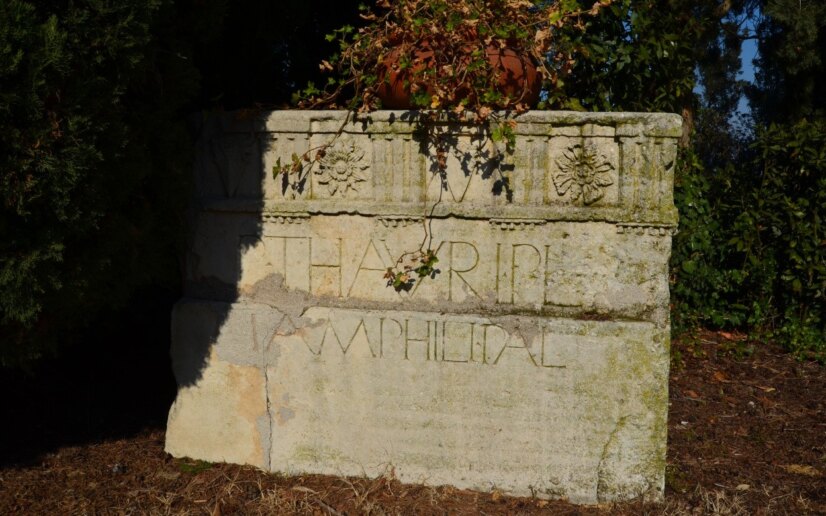
Frammento di Ciborio
Museo archeologico di Sirmione, Piazzale Orti Manara, 4
A fragment of a ciborium, belonging to the church of San Salvatore, takes us back to the end of the Lombard age: in fact, King Desiderius and his son Adelchi are mentioned, the last sovereigns, defeated by Charlemagne (774). The dramatic epilogue of the Lombard kingdom is at the center of Manzoni’s tragedy centered on the unfortunate prince. Sirmione was an important center in the Lombard age, so much so that the pious Queen Ansa, wife of Desiderio, founded the church of San Salvatore and the small monastery of the same name, now disappeared, linked to that of Santa Giulia in Brescia.
Iscrizione: (in) NOMINE D(omi)NI/(Re)GNANTE DOM(I)/NOI – (N)O(s)T(ri) DESIDERIO ET ADELGIS RE/GES HU/NC TE
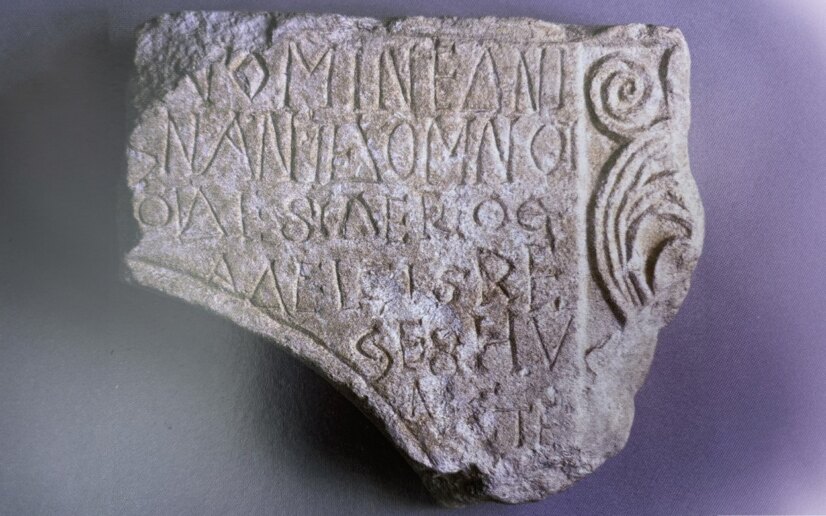
Base con dedica a Caio Erennio Ceciliano
Museo archeologico di Sirmione, Piazzale Orti Manara, 4
It is a marble statue base found in 1960 in the area between via Santa Maria Maggiore and via Antiche Mura. The find bears the dedication to Caio Erennio Ceciliano, citizen and patron of the city of Verona, of which he was the maximum administrator, tribune of the plebs, quaestor of Gallia Narbonensis to which the emperor Hadrian granted entry to the senate. The original location of the monument is not known, a date is assumed around the 30s of the 2nd century AD.
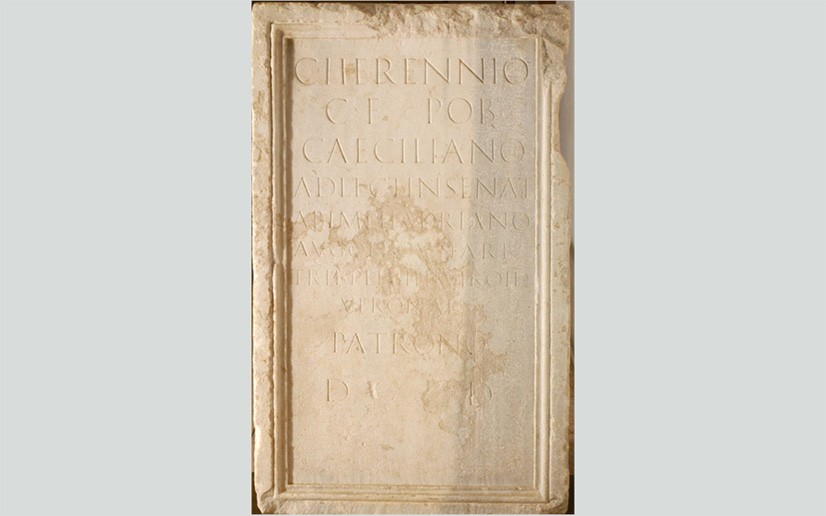
Bibliography:
Elisabetta Roffia, Sirmione in età antica il territorio del comune dalla preistoria al medioevo, Et Edizioni, Milano, 2018
R. Bertolazzi – V. Guidorizzi, Regio X – Venetia et Histria. Arilica et Sirmio, in Supplementa Italica, Nuova serie, 29.
Gian Pietro Brogiolo, Silvia Lusuardi Siena, Paola Sesino – Ricerche su Sirmione longobarda, All’Insegna del Giglio, 1989
The responsibility for the contents lies exclusively with the Municipality of Sirmione
Good to know


